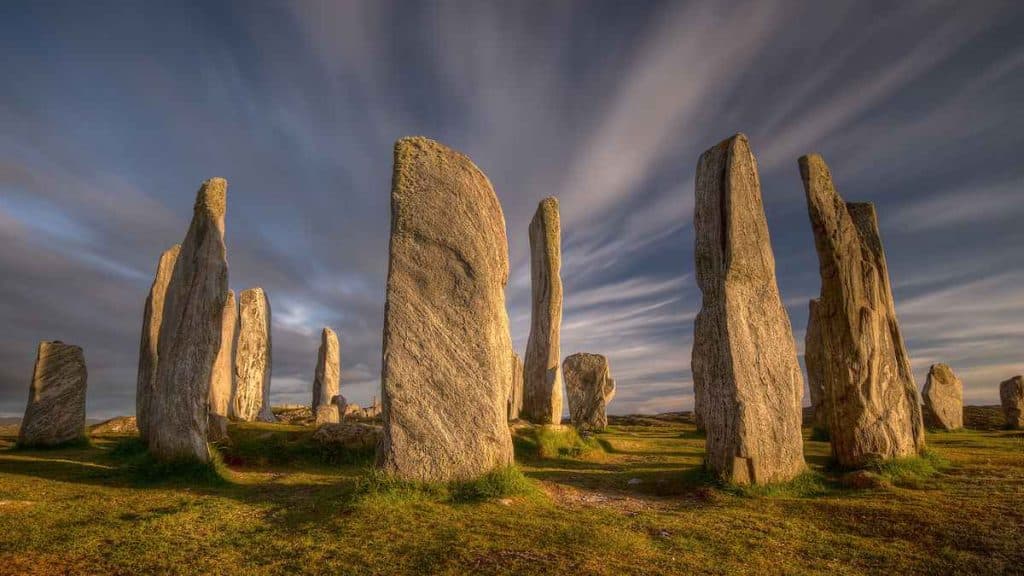Britain is a country steeped in history and legend, and nowhere is that more apparent than the prehistoric standing stones and perplexing ancient formations dotted across the country that have attracted such interest and intrigue throughout the centuries.
From prehistoric stone circles to medieval castles, these sites offer a glimpse into the lives of the people who lived here long ago. But among all the ancient sites in Britain, there are a few that stand out for their air of mystery and intrigue.
In this blog post, we will take a journey through some of the most mysterious ancient sites in Britain, examining their history, legends, and enduring mysteries.
Top Ancient Sites in the UK
Stonehenge:
An ancient monument located in Wiltshire, England. It is believed to have been constructed between 3000 and 2000 BCE, during the late Neolithic and early Bronze Age. The monument is made up of a ring of standing stones, each of which is around 13 feet (4 meters) tall and 7 feet (2 meters) wide. The stones are believed to have been brought from as far away as 150 miles (240 kilometers) away.
The purpose of Stonehenge is still a mystery. One theory is that it was used as a place of religious or ceremonial importance. Another theory is that it was an ancient observatory or calendar used to track the movement of the sun and moon. It’s also been suggested that it may have been a healing site, a burial site or even a place of power or wisdom.
Despite its ancient origins, Stonehenge continues to be an important cultural and historical site, with private tours amongst the standing stones allowing people to visit the site and marvel at the stones while their guide discusses the history, theories and possible otherworldly connections and powers at play at Stonehenge.
Tintagel Castle:
A medieval fortress located on the coast of Cornwall, England. It is believed to have been built in the 13th century and is most famously associated with the legend of King Arthur. According to legend, Tintagel was the birthplace of Arthur and was the seat of his father, King Uther Pendragon.
The castle is built on a headland that is surrounded by steep cliffs, making it an imposing and defensible structure. It is thought to have been a significant site during the medieval period, although the true purpose and history of the castle remain a mystery.
Archaeological excavations at Tintagel have revealed evidence of a dark age settlement and artifacts suggesting trade and cultural exchange with Mediterranean people, strengthening the association with King Arthur
The Giant’s Causeway:
A stunning geological formation located on the coast of County Antrim, Northern Ireland. It is made up of around 40,000 interlocking basalt columns that were formed by ancient volcanic activity. The columns vary in size and shape, with some standing as tall as 39 feet (12 meters).
The Giant’s Causeway has long been a source of fascination and wonder. According to Irish legend, the causeway was built by a giant named Finn MacCool, as a pathway to Scotland, so he could fight a rival giant. The legend gives the site a mystical and magical feel that continues to captivate visitors.
The Giant’s Causeway is now a UNESCO World Heritage Site and a popular tourist destination. Visitors can hike along the coastal path, explore the columns and learn about the geological and cultural history of the site. The combination of geological wonders and a rich cultural heritage, make Giant’s Causeway a unique and captivating place that continues to amaze visitors to this day.
The White Horse of Uffington:
A fascinating prehistoric chalk figure located in the English county of Oxfordshire. The figure depicts a horse and is approximately 110 meters (360 ft) long. It is believed to have been created in the Late Bronze Age or Early Iron Age, around 3,000 years ago.
The purpose of the White Horse of Uffington is not known for certain, but there are several theories. One theory is that it was created as a sacred symbol, possibly associated with a local tribe or ancient religious beliefs. Another theory is that it served as a territorial marker or a symbol of a powerful leader or tribe. Additionally, it’s been proposed that the image could be related to a solar or lunar calendar, with the horse’s shape and position in the landscape marking significant times of the year.
The White Horse of Uffington is a Scheduled Ancient Monument, and it is protected and preserved by the National Trust. Visitors can take a walk along the Ridgeway and view the White Horse, or climb the nearby White Horse Hill to get an excellent panoramic view of the site. Its age and provenance are a mystery, and despite centuries of study, the figure continues to fascinate visitors and historians alike
Contact The Mystical Britain Specialists
Britain is home to a rich history and many ancient sites that have captured the imagination of people for centuries.
Alongside the mysterious and intriguing sites we have discussed here there are many more such as Neolithic villages in Orkney, the Fairie Pool in the Scottish Highlands, Glastonbury Abbey and many more.
To discuss arranging a private tour of mystical sites across the Uk, contact the experts at Private Tours England
